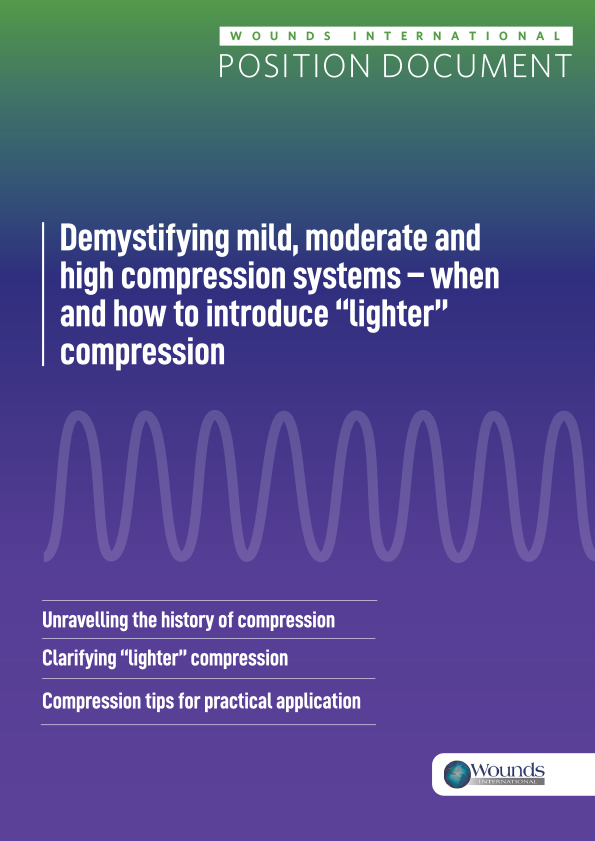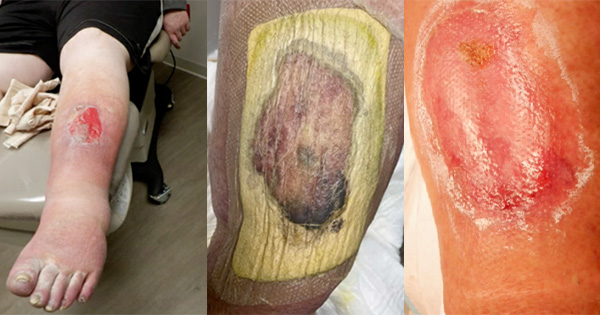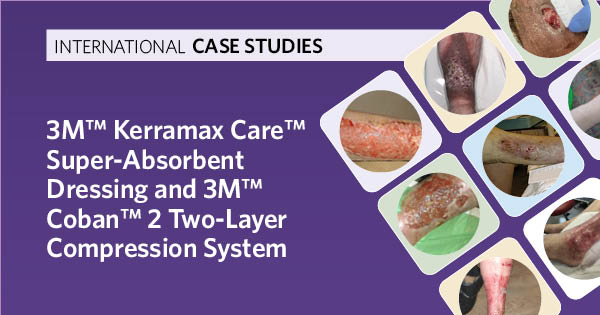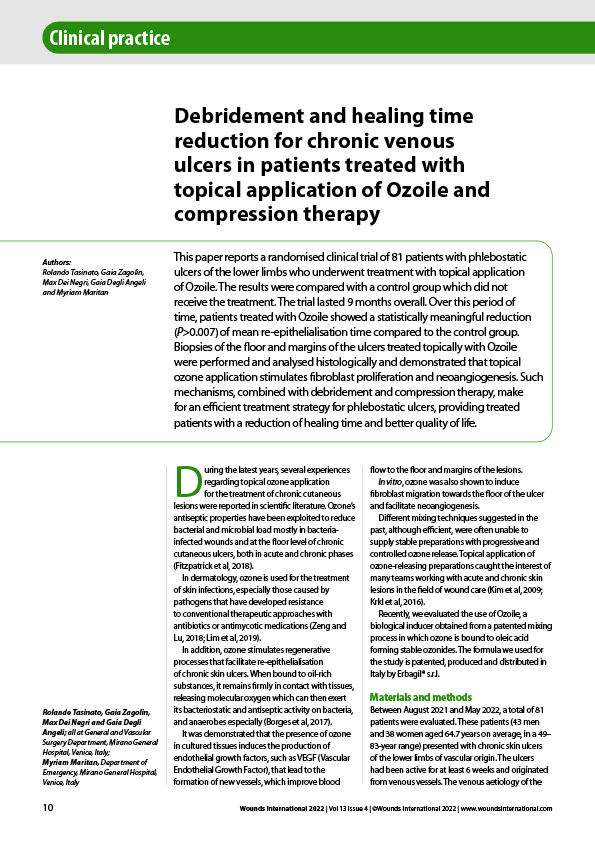Compression therapy remains the treatment of choice for venous leg ulcers and, in mixed ulcer aetiology, mild compression has an important role in treatment, increasing both venous return and improving arterial perfusion. However, data would indicate that the tools required to assess patients before the application of compression, such as the Ankle Brachial Pressure Index (ABPI) calculation are often either delayed or not performed in many patients with lower limb ulceration. It is unclear whether this relates to skill, equipment availability, available time or patient preference.
In the UK, the draft lower limb recommendations from the National Wound Care Strategy Programme Group (2019) focus on improving the uptake of compression therapy and propose new recommendations for lower limb wounds to avoid delayed treatment. Initial discussions suggest that the group favours the early introduction of first-line, mild graduated compression (up to 20mmHg) prior to full assessment of a patient with a lower limb wound providing “red” flag conditions are excluded (e.g. severe peripheral arterial disease, a suspected new or acute deep vein thrombosis (DVT), a skin cancer or an acute infection).
It has been suggested that mild compression may only be suitable for less than 10% of a caseload and can be used inappropriately, especially when full compression is clinically indicated. The recommendation may also shift focus away from the aim of getting the majority of patients with venous ulceration into moderate-to-strong compression as early as possible. This provides an opportunity to revisit the principles of compression therapy and provide clarity in relation to understanding factors that influence sub-bandage compression levels and how to safely deliver effective compression.
This position document aims to challenge the tradition of pressure level categorisation for compression and aims to present a better understanding of how to select and deliver safe and effective compression for lower leg wounds, in particular in patients with mixed arterial disease. The goal is to move towards a more holistic and individualised patient-centered approach.
The first article provides a brief history of compression, the terminology used to describe compression therapy and the current challenges around how much pressure is delivered in practice. This includes a call for better understanding of what different compression systems offer, outlining the challenges to using arbitrary figures for sub-bandage pressure and ABPI and an understanding of the factors that affect pressure delivery.
The second article focuses on the introduction of the term — ‘lighter’ compression — as a safe way to introduce compression early in presentation. Lighter compression describes compression that is less than 40mmHg, and so combines the categories of mild (<20mmHg) and moderate (20–40mmHg) compression. Lighter compression is indicated in several clinical situations, such as in the initial stages of venous disease, when a venous ulcer is healed and recurrence prevention is necessary, in mixed aetiology disease and in the lymphoedema maintenance phase. The final article offers a practical focus for using lighter compression (<40 mmHg) with helpful tips and tricks, and case studies to illustrate best practice when using ‘lighter’ compression.





